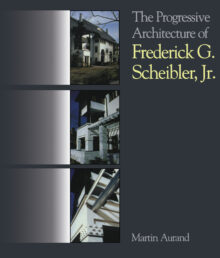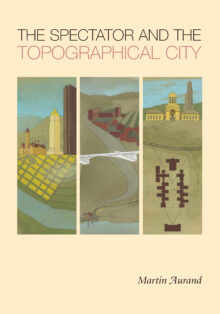

Martin Aurand
Martin Aurand is architecture librarian and archivist at Carnegie Mellon University.
The Progressive Architecture Of Frederick G. Scheibler, Jr
Frederick G. Scheibler, Jr. (1872–1958) was the rare turn-of-the-century American architect who looked to progressive movements such as Art Nouveau and Arts and Crafts for inspiration, rather than conventional styles. His fresh house designs and plans for apartment buildings and multifamily “group cottages” feature dramatic massing, rich detailing, and a wide variety of materials. Scheibler envisioned each building as a work of art, integrating architecture and ornamentation. Prized today, his best works are scattered throughout Pittsburgh’s East End and eastern suburbs.
This richly illustrated volume, the first comprehensive study of Scheibler, includes 125 historic and contemporary photographs and drawings, a catalogue raisonné of all of his known projects—including many not recorded in any other published source—a list of books in his library, and a selected bibliography.
The Spectator and the Topographical City
The Spectator and the Topographical City examines Pittsburgh’s built environment as it relates to the city’s unique topography. Martin Aurand explores the conditions present in the natural landscape that led to the creation of architectural forms; man’s response to an unruly terrain of hills, hollows, and rivers. From its origins as a frontier fortification to its heyday of industrial expansion; through eras of City Beautiful planning and urban Renaissance to today’s vision of a green sustainable city; Pittsburgh has offered environmental and architectural experiences unlike any other place.
Aurand adopts the viewpoint of the spectator to study three of Pittsburgh’s terrestrial rooms: the downtown Golden Triangle; the Turtle Creek Valley with its industrial landscape; and Oakland, the cultural and university district. He examines the development of these areas and their significance to our perceptions of a singular American city, shaped to its topography.


